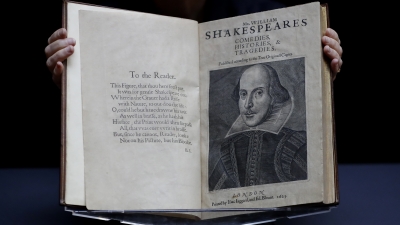Shakespeare’s lost play
Literary scholars have always alluded to the fact that there are many plays by brilliant English playwright William Shakespeare that have not seen the light of day and Cardenio might be the most popular of them all.
Most scholars suggest that The History of Cardenio often simply called Cardenio was written in 1613. As it is one of Shakespeare's later contributions, it is (like many of his later plays) believed to be co-authored.
In the last stages of his career, Shakespeare is said to have been working with a writing partner, English dramatist John Fletcher. The two of them co-wrote ‘The Two Noble Kinsmen’ in 1613 and prior to this had also joined forces to write a history play, ‘Henry VIl’l which is also known as ‘All is True’.
Cardenio
The argument of dating the play to 1613 is supported by the fact that the records of the treasurer of the King’s chamber to King James state that two payments were made to Shakespeare’s drama company King's Men in 1613 for plays called "Cardenna" and "Cardenno" These two records are presumed to refer to the same play (Cardenio) as rules for spelling were not standardised in Shakespeare's time. Therefore, these records are taken as evidence that Cardenio was written around 1613.
The titular character of this play is also a recurring figure in one of the most influential works of Spanish literature Miguel de Cervante’s Don Quote. Written and published in 1605, the first English translation of this Spanish classic came around 1612. Therefore, it is fairly safe for us to assume that Shakespeare and Fletcher would have taken inspiration from this translated version of the novel.
Never published
For some reason, John Heminge and Henry Contell did not include Cardenio in the First Folio (1623), which was the first significant compilation of the English playwright’s works. As a result, the play was never published or made available to the general public.
Lost and forgotten
Many scholars and researchers have come up with theories to justify why this play was not included in the First Folio and how or why it got lost.
One of the possible answers for excluding it can be that it was written in collaboration, but the folio does include co-authored plays such as Henry VIII and Two Gentlemen of Verona, so this cannot be the reason.
Another suggestion is that they did not include it as they did not have a written copy - because the manuscript was destroyed in the fire that burnt down Shakespeare's Globe Theatre on June 29, 1613. Or perhaps the play, fresh from its early performance at the King's court in 1613, was new enough that no copy had been made of text and that the only text of the manuscript was in the Globe when it burnt to the ground. Although it is hard to specify how Cardenio's original text was lost, it is certainly fascinating to know how through the years numerous playwrights, actors, and directors have tried to reconstruct and recover this play.
In 2009, British academic Bernard Richards reconstructed Cardenio on stage. More recently in 2011, English director Gregory Doran crafted his own version of the play for production at the Royal Shakespeare Company's Swan Theatre.
Musing about Cardenio in an interview with the Wall Street Journal in 2009, Canadian novelist Stephen Marche said "This work would have been a direct link between the founder of the modern novel and the greatest playwright of all time, a connection between the Spanish and British literary traditions at their sources, and a meeting of the grandest expressions of competing colonial powers..."
Picture Credit : Google













